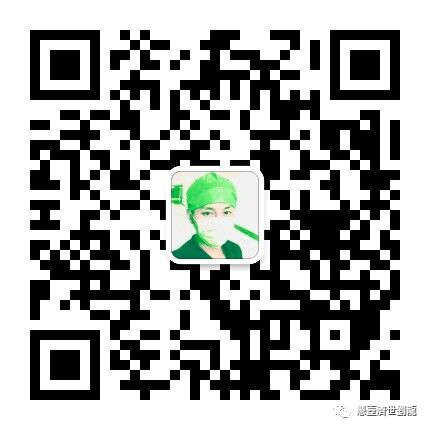
The common cold is an external pathogenic disease caused by the invasion of wind evil, characterized by nasal congestion, runny nose, sneezing, cough, headache, chills, fever, and general discomfort.
In Traditional Chinese Medicine (TCM), the common cold is generally classified into five categories: Wind-Cold, Wind-Heat, Qi Deficiency with External Pathogen, Summer-Dampness (Gastrointestinal type), and Wind-Warmth with Heat Toxin attacking the Lung (commonly referred to as influenza).
Wind-Cold Cold: Common in winter and spring, caused by the invasion of wind-cold evil and the failure of Lung Qi to disperse. Main symptoms include severe chills, mild fever, no sweating, headache, body aches, nasal congestion with clear discharge, sneezing, itchy throat, cough with thin white phlegm, and a thin white tongue coating. Treatment should focus on dispersing wind-cold using warm, pungent herbs, primarily including Ma Huang (Ephedra), Jing Jie (Schizonepeta), Fang Feng (Siler), and Su Ye (Perilla Leaf).
Wind-Heat Cold: Common in summer and autumn, caused by the invasion of wind-heat and the disruption of Lung Qi. Main symptoms include higher fever, slight aversion to wind and cold, headache, sore throat or swollen tonsils, nasal congestion with yellow discharge, cough with thick yellow phlegm, thirst, and a thin white to slightly yellow tongue coating. Treatment should focus on clearing heat and dispersing the Lung using cool, pungent herbs, primarily including Ju Hua (Chrysanthemum), Bo He (Mint), and Sang Ye (Mulberry Leaf).
Qi Deficiency with External Pathogen: Typically seen in individuals with a weak constitution who are prone to external pathogens, presenting with fever and aversion to cold; tongue coating is white. These individuals often sweat easily, feel weak, and experience recurrent colds, fatigue, and excessive phlegm. Treatment should focus on nourishing the Lung and boosting Qi, primarily using herbs like Ren Shen (Ginseng), Chai Hu (Bupleurum), Su Ye (Perilla Leaf), and Sang Ye (Mulberry Leaf).
Summer-Dampness Cold: Common in summer, often due to pre-existing damp-heat conditions exacerbated by cold exposure or excessive consumption of cold foods. Symptoms include chills and fever, headache, chest fullness, abdominal pain, vomiting, diarrhea, fatigue, lack of appetite, and a bland taste in the mouth.
Wind-Warmth with Heat Toxin attacking the Lung: Similar to Wind-Heat Cold but with rapid onset, severe symptoms, high fever, chills, severe headache, body aches, fatigue, red tongue, yellow coating, and a rapid pulse. Treatment should focus on clearing heat and detoxifying, with consideration for Western medical treatment and attention to disinfection and isolation when necessary.
One common difficulty in distinguishing between Wind-Cold and Wind-Heat colds is the color of phlegm and nasal discharge. Yellow and thick phlegm with yellow nasal discharge suggests a Wind-Heat cold, while Wind-Cold colds typically present with clear, thin phlegm. Additionally, Wind-Cold patients exhibit more pronounced symptoms of aversion to cold and body aches. Observing the tongue coating can also help: Wind-Cold presents with a white coating, while Wind-Heat shows a yellow coating. However, Wind-Cold can easily transform into Wind-Heat within 2-3 days.
The common cold is one of the most prevalent types of diseases, characterized by nasal congestion, runny nose, sneezing, headache, chills, fever, and general discomfort, often referred to as “catching a cold” or “severe cold.” It can occur in all seasons, with higher incidence in winter and spring. Clinically, it is differentiated into common cold (upper respiratory infection) and influenza.
1. Initial Stage of Common Cold: Common symptoms include itching and discomfort in the nasopharynx, nasal congestion, runny nose, sneezing, heavy voice, aversion to wind and cold, headache, etc.
2. Later Stage of Common Cold: Symptoms include fever, cough, sore throat, and discomfort in limbs and joints.
3. Seasonal Cold (Influenza): Often presents epidemically, with sudden onset of chills, severe cold, high fever, and pronounced systemic symptoms.
In TCM, the common cold corresponds to the Western concept of the common cold and upper respiratory infection, while seasonal cold corresponds to influenza. TCM believes that the common cold is related to the invasion of wind evil and seasonal viruses, often due to a weak constitution that is susceptible to external pathogens.
1. Invasion of External Pathogens: This includes the invasion of wind-cold, wind-heat, summer-dampness, and summer-heat. Factors include not adjusting clothing with climate changes, exposure to wind or cold, getting wet, seeking coolness in hot weather, consuming cold foods, and excessive sun exposure.
2. Insufficient Zheng Qi: This refers to a weak immune system, such as staying up late, inadequate rest, excessive fatigue, malnutrition, and transmission from others.
1. Wind-Cold Cold (Mainly characterized by cold and body pain)
(1) Common symptoms: Significant aversion to cold, low-grade fever or no fever, no sweating, no thirst, body aches, headache, sneezing, nasal congestion with clear discharge, itchy throat, accompanied by cough with thin white phlegm, and a thin white tongue coating. The characteristic of onset is more pronounced aversion to cold and body aches.
(2) Related TCM formulas include:
Gan Mao Qing Re Granules: Suitable for the early stage of Wind-Cold Cold and mild cold symptoms (with no significant internal heat symptoms), generally presenting with aversion to cold, clear nasal discharge, and mild fever.
Gan Mao Tui Re Tablets: Suitable for the mid-stage of Wind-Cold Cold and mild cold symptoms (with mild internal heat), with mild fever.
Gan Mao Soft Capsules: Suitable for severe Wind-Cold Cold (with significant internal heat symptoms), with higher fever.
Fang Feng Tong Sheng Pills: Suitable for severe Wind-Cold Cold, external cold with internal heat (cold trapping fire), urticaria, wind rash, eczema, etc., with significant fever, accompanied by short red urine and constipation.
2. Wind-Heat Cold (Mainly characterized by sore throat and fever)
(1) Common symptoms: Fever or high fever, slight aversion to cold, headache, nasal congestion with sneezing, yellow thick nasal discharge, sweating, dry mouth and thirst, sore throat, accompanied by cough with thick yellow phlegm, red tongue tip, and thin yellow tongue coating. The characteristic of onset is primarily fever, with less pronounced aversion to cold.
(2) Related TCM formulas include:
Yin Qiao Jie Du Pills: Suitable for the early stage of Wind-Heat Cold (with mild symptoms), with no significant fever symptoms.
Gan Mao Zhi Ke Granules: Suitable for the early stage of Wind-Heat Cold, Wind-Heat cough (mild cold with cough), with mild fever symptoms.
Ling Qiao Jie Du Pills: Suitable for severe Wind-Heat Cold (with significant internal heat symptoms), with higher fever.
Ling Yang Gan Mao Tablets: Suitable for severe Wind-Heat Cold, influenza, etc., with significant fever, often presenting with high fever.
Ban Lan Gen Granules (Syrup): Suitable for viral colds, acute pharyngitis, acute tonsillitis, etc., and has a certain preventive effect against colds.
3. Summer-Dampness Cold (also differentiated into summer-dampness and damp-heat)
(1) Common symptoms: Slight aversion to cold, high fever, excessive sweating without relief, nasal congestion with thick discharge, headache with heaviness, fatigue, irritability, dry mouth with no desire to drink, chest fullness, vomiting, diarrhea, short red urine, and yellow greasy tongue coating. The characteristics of onset are as follows:
① Summer-Dampness: Fever, sweating with heat not subsiding, headache with heaviness, chest fullness, abdominal distension and pain, vomiting, diarrhea, and yellow greasy tongue coating.
② Summer-Heat: High fever, excessive sweating, thirst, fatigue, low energy, and yellow urine with thin yellow tongue coating.
(2) Related TCM formulas:
Huo Xiang Zheng Qi Tablets: Suitable for summer injury to Yin and summer-dampness cold, cold-damp diarrhea, and discomfort due to environmental changes.
Huo Xiang Qu Shu Water: Suitable for summer injury to Yin and summer-dampness cold, cold-damp diarrhea, and discomfort due to environmental changes (with a cold tendency).
Jia Wei Huo Xiang Zheng Qi Pills: Suitable for summer injury to Yin and summer-dampness cold, cold-damp diarrhea, and discomfort due to environmental changes (with more severe symptoms).
Si Zheng Pills: Suitable for summer-dampness cold with spleen deficiency and food accumulation (to dispel summer heat and resolve dampness).
Liu He Ding Zhong Pills: Suitable for summer-dampness cold with spleen and stomach disharmony and food accumulation (to dispel summer heat and eliminate dampness).
Ren Dan: Suitable for heat stroke (summer heat) and summer injury to Yang.
Comparison of Wind-Cold and Wind-Heat Colds
1. Similarities: Symptoms include aversion to cold, fever, nasal congestion, runny nose, and body aches.
2. Differences:
(1) Overall symptoms: Wind-Cold Cold presents more pronounced aversion to cold and body aches, while Wind-Heat Cold is primarily characterized by fever, with less pronounced aversion to cold.
(2) Color and quality of phlegm: Wind-Heat Cold presents with yellow or thick phlegm, while Wind-Cold Cold presents with thin white phlegm.
(3) Color and quality of nasal discharge: Wind-Cold Cold presents with clear, thin nasal discharge, while Wind-Heat Cold presents with thick yellow nasal discharge.
(4) Tongue coating: Wind-Cold Cold presents with a white coating, while Wind-Heat Cold presents with a yellow coating.

For consultation, please contact via WeChat.

